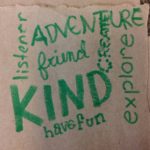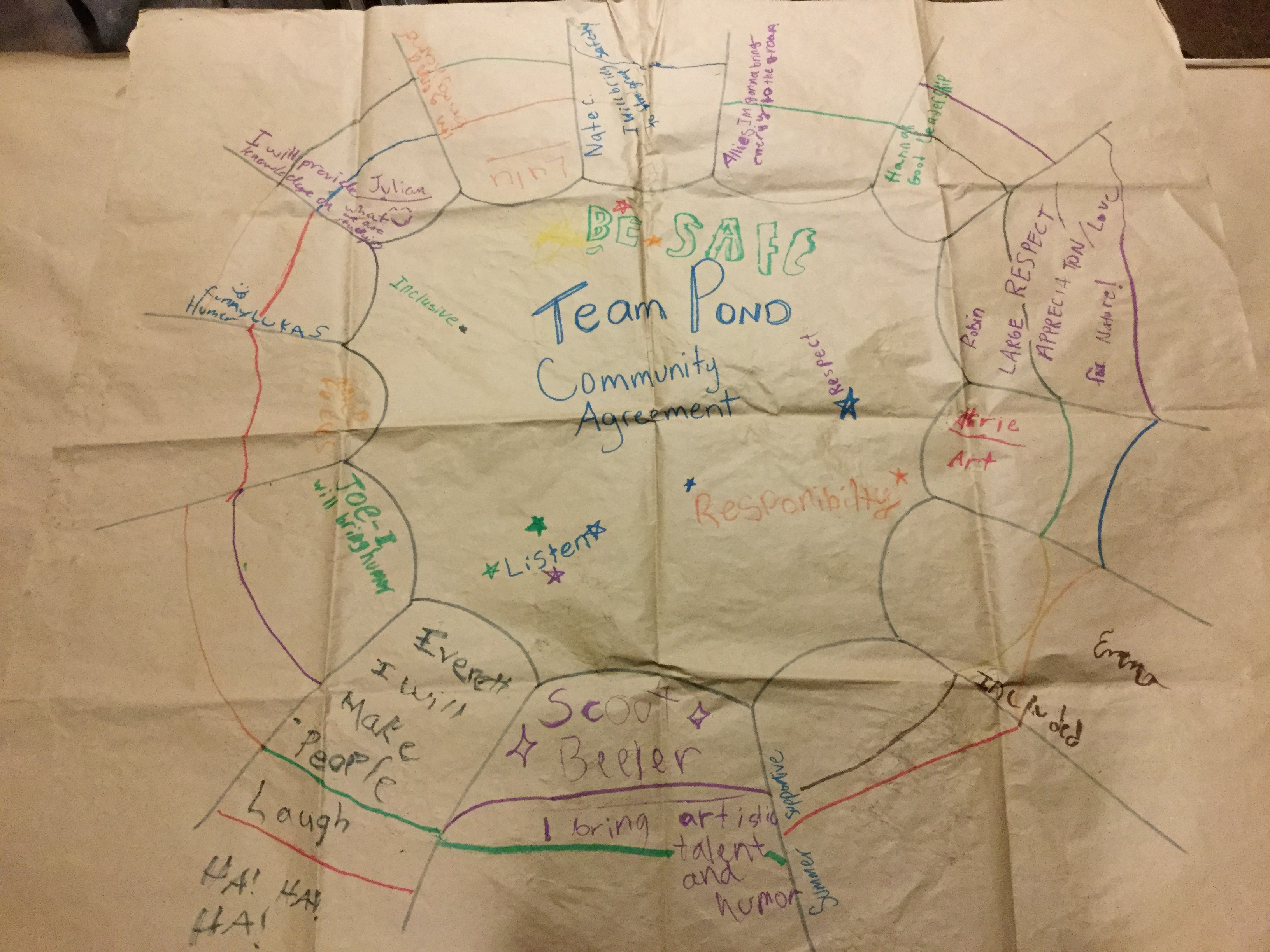How does one rapidly build trust with a group of elementary students within a four day residential outdoor education program? By fostering a strong sense of community through team building activities. An instrumental piece of this puzzle is the Community Agreement, this is a living document created by the students and it declares their expectations for how our team will operate. Similar to classroom charters, at the center of this Agreement are the behavior norms that students establish for themselves. Typically these include “be safe”, “respect”, “inclusion” and the all important “have fun!” Additionally, each student has a space in which to write a positive individual quality that they will bring and share with our team. These range from “creativity” and “humor” to “curiosity” and “energy”. 
The manner in which this essential document is created is carefully accounted for in a step-by-step method. The elements of the document are verbally discussed yet before anything is added in ink, students are allowed think time to contemplate what they would like to add. To help clarify those ideas, students are asked to share with others in the group before they get a marker to write on the Agreement. This helps promote critical thinking, because what does being kind actually look like? What does it mean to be respectful? This sharing on day one helps students hold each other accountable throughout the week. This not only helps out the whole team and the instructors, but also helps to empower students to speak up for themselves and others. This method of self-empowerment is part of experiential education, facilitating positive opportunities to engage with the community.
Even after the Agreement is fully filled out and revisited each day, it can be cumbersome to physically unfold on the fly in the field. An easier method of reference to the agreement and appropriate behaviors can be necessary, verbal shortcuts or acronyms are one such powerful tool. My classmate Natalie developed one such acronym, CEO. Collaborate, Explore and Observe. Short but sweet and it hits the main targets of our science-based outdoor education school; it also becomes a method in which to reference the Community Agreement. Using acronyms like CEO, can make the concept stickier, aiding student recall of expected behavior norms. This acronym is also broad enough that it can be applied in a variety of contexts throughout the week and of course applies not only to how we conduct ourselves with our human community but also with the natural environment; serving as a reminder for systems thinking, recognizing the complex relationships between communities and the environment. Additionally, the written Community Agreement and verbal acronym help engage students with different learning styles; which as any knowledgeable practitioner knows, utilizing a variety of methods is key for increasing student success.
This week Natalie and I will test run CEO, I foresee students enjoying being asked to act like a boss! Hopefully this will gently remind them to be thoughtful teammates and help everyone be successful as we explore and learn together outside.

I love this idea of CEO – reinventing the word to represent so many wonderful things! I also love the idea about using acronyms to make the community agreement more accessible throughout the week!
I love that you have included ways to get students to think more critically in your community agreement. I would be interested to hear how your community agreement practice has evolved.
You have such a great attitude toward being observed, as well as with giving and receiving feedback! I like how you brought up that the observer and the observee have different perspectives–that’s an insightful way of thinking about it, and a good way to get a well-rounded picture of what happened.